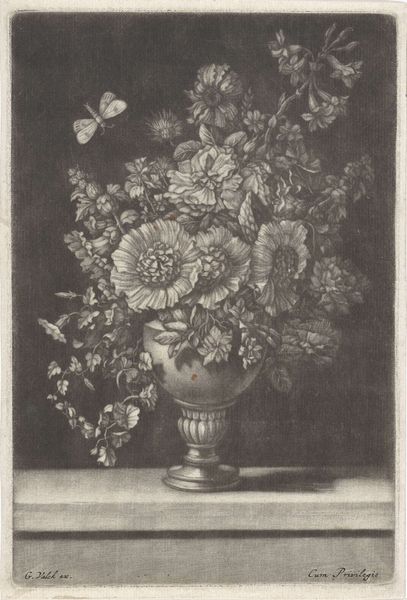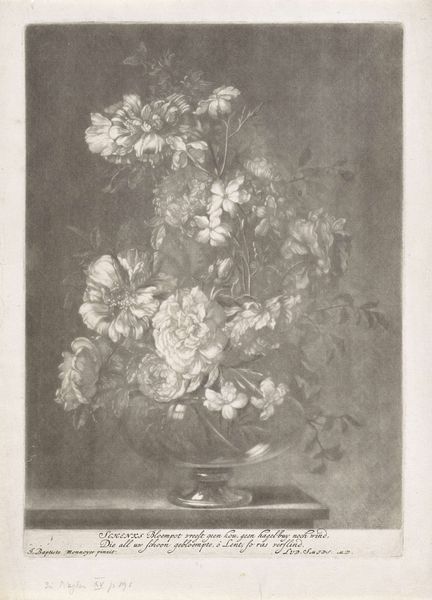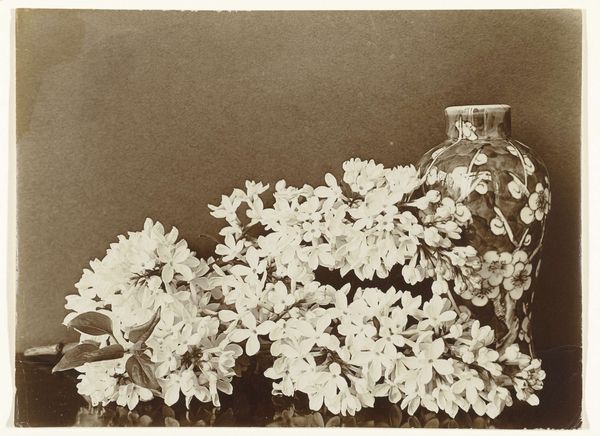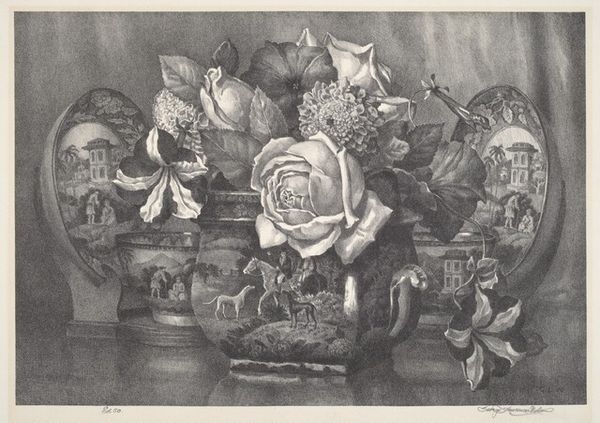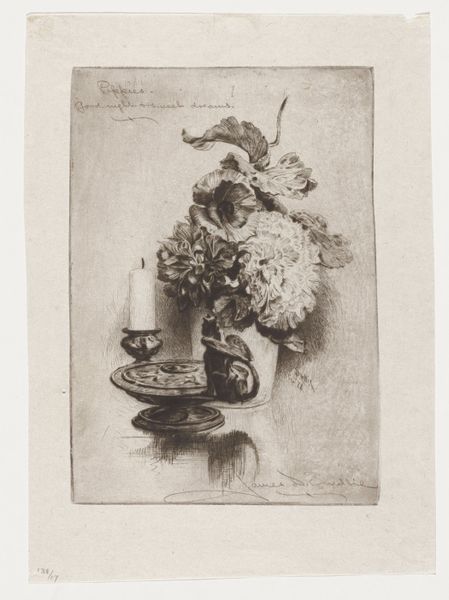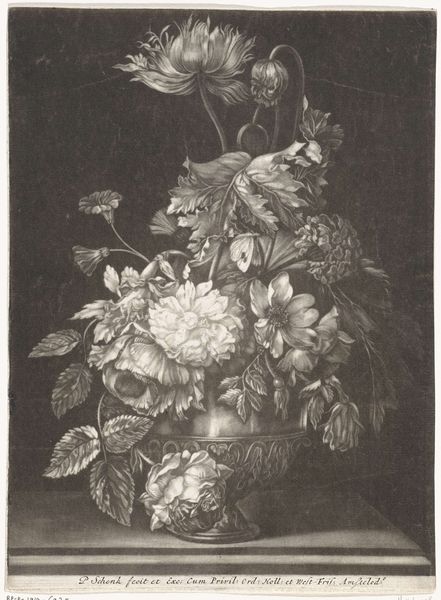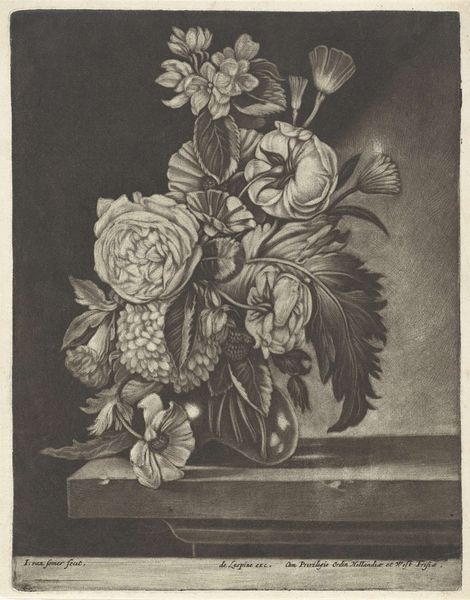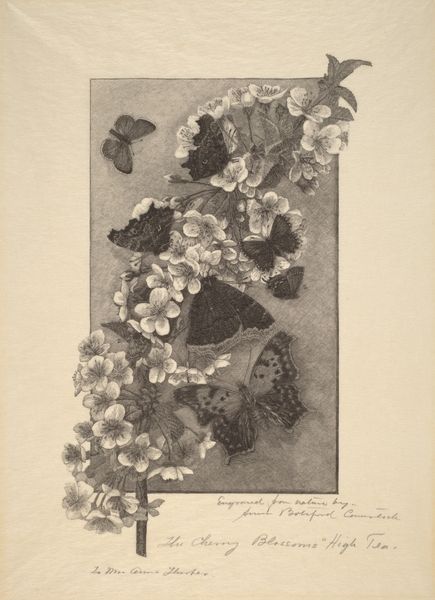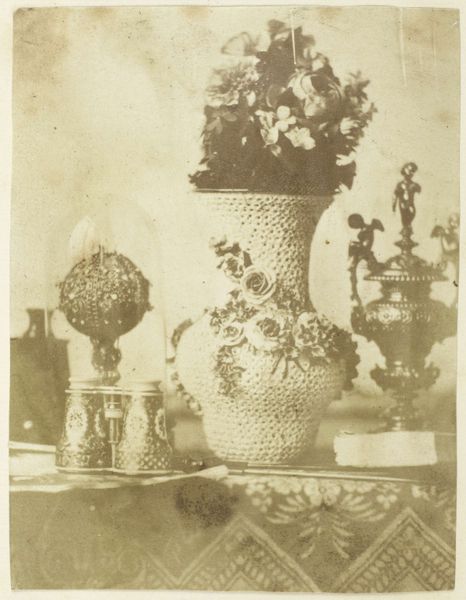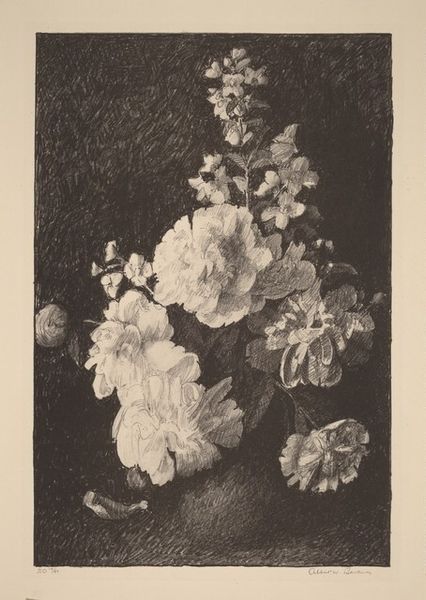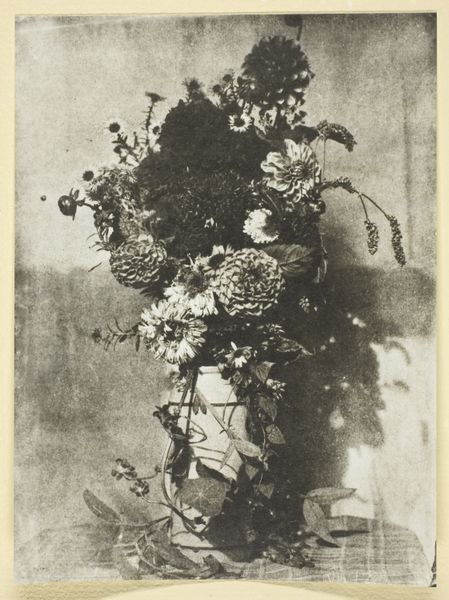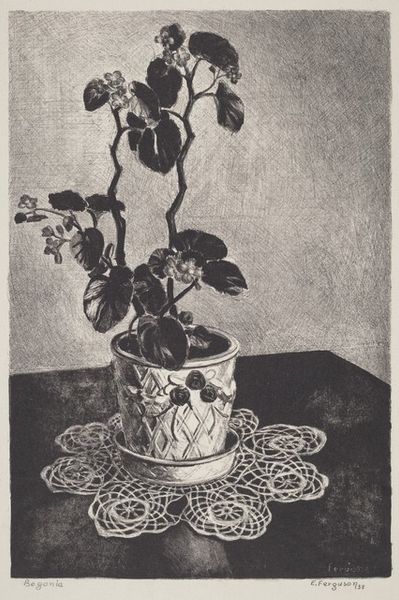
drawing, print, graphite
#
pencil drawn
#
drawing
# print
#
charcoal drawing
#
pencil drawing
#
surrealism
#
graphite
#
academic-art
Dimensions: Image: 448 x 352 mm Sheet: 514 x 424 mm
Copyright: National Gallery of Art: CC0 1.0
Editor: Here we have Minnetta Good's "Victorian Still Life #1," a drawing from sometime between 1935 and 1938, done with graphite and pencil. It’s quite striking how the flowers are rendered with such detail, contrasting with the more loosely defined background. How would you approach an analysis of this work? Curator: Focusing on the labor and material production is key here. Consider the graphite and pencil – readily available materials reflecting both accessibility and perhaps, economic constraints of the time. What social realities shaped Good's choice of such common mediums rather than more luxurious materials? Editor: That's an interesting point! So, you’re thinking about how her access to certain materials would shape the kind of art she's creating. Curator: Precisely. This wasn't simply a question of aesthetic preference but also of available resources and skill. Also, note the repetitive nature of still life drawing. Could it be considered a form of labor? Was Good drawing for pleasure, or was it perhaps commissioned, creating value and income in a still-depressed economy? Editor: That adds another layer – seeing this not just as an aesthetic exercise but a form of production in itself. I hadn't considered that. What do you mean about the challenge between high art and craft? Curator: Where do we place "drawing"? Traditionally, drawing has been a practice or foundation for a future work and often classified as separate to painting or sculpture, "high art." Where does mass produced "print" lie as a final form and where does that challenge hierarchical boundaries of art and production. It pushes us to confront labor, materials and accessibility, as core components to consider when viewing the still life as a "finished work." Editor: I see what you mean. By focusing on the materials and the social context, we can really re-evaluate what we think about the artist’s intentions and what the still life really represents. Curator: Exactly, considering these production details reshapes how we understand its value and what it might have represented to its contemporary viewers, too.
Comments
No comments
Be the first to comment and join the conversation on the ultimate creative platform.

